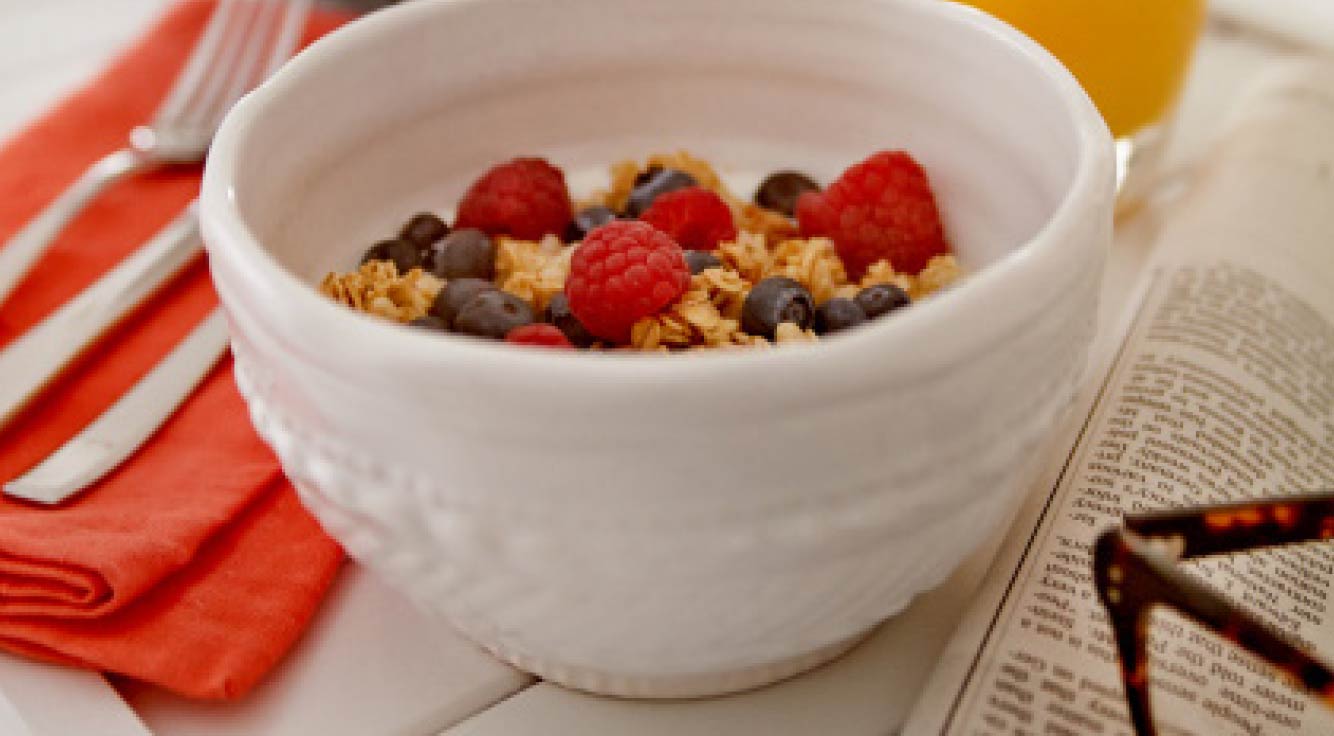
Add this nutritional powerhouse to your next meal
It’s no secret that fiber keeps your digestive tract moving. In addition to aiding digestion, this dietary workhorse also offers many other health benefits.
According to the USDA, high-fiber diets may reduce the risk of heart disease, obesity, and type 2 diabetes. “Essentially, fiber helps grab cholesterol from your bloodstream for removal,” says Kaiser Permanente registered dietitian Rachel Kester. “And fiber-containing foods take longer to digest, so your blood sugar doesn’t rise so fast.” They keep you feeling full longer — helping you maintain a healthy weight.
But many adults aren’t eating enough fiber. It’s recommended that women get 25 grams of fiber per day and men get 35 grams per day. (Note: These numbers apply to people ages 5 and up). Here are easy ways to incorporate more fiber into your day.
- Think outside the (cereal) box. While some cereals, such as Wheat Chex, are good sources of fiber, there are many other options to give you a fiber boost to start your day. Whip up a batch of overnight oats — and sprinkle on chia seeds for extra health benefits. Or use whole-grain bread to make avocado or peanut butter and banana toast. Bonus: When you eat fiber for breakfast you’ll feel full longer so you’re not starving by lunch, which can lead to overeating.
- Focus on whole grains. Swap out white rice or noodles with healthy whole grains like barley, brown rice, quinoa, or farro. And yes, popcorn is a whole grain, which makes it a great snack choice — just hold off on the butter and salt.
- Choose smart snacks. Beans and lentils are high in fiber, with 6 to 8 grams of fiber per half-cup serving. “Adding a bean or lentil soup to a lunch or dinner is a great addition to a meal, especially on cold days,” says Kester. “Also, try bean dips for snacks, like hummus with veggies or black bean chips. Roasted garbanzo beans is another good option. You can get them ready-to-eat at the grocery store, or you can make them yourself. They’re a great salty, crunchy snack with the benefit of 5 grams of fiber and 6 grams of protein in just a quarter-cup serving.”
- Add veggies to your plate. Kester also recommends that you fill half your plate with vegetables. “Most veggies have 2 to 3 grams of fiber per half-cup serving, so double up your portions. Take advantage of seasonal produce by choosing baby lettuce for a salad or roasting some fresh asparagus in the oven with a bit of olive oil and seasoning.”
- Satisfy your sweet tooth with fruit. “If you’re craving sweetness, consider having fruit for dessert,” says Kester. “Baked apples or poached pears are great options. You can add cinnamon and a bit of sugar for flavor.” And most fruit has 3 to 4 grams of fiber per serving.
A helpful tip — don’t load your diet full of fiber at one time. “If you’re not used to eating high-fiber foods, add them slowly to give your body time to adjust. And be sure to drink water, too, since your gut will need more water to properly digest the added fiber.”
Find more information on nutrition and wellness online.
In the Spotlight – Find out what’s happening in your area:
Colorado-Denver/Boulder
Colorado – Mountain Area
Northern Colorado
Southern Colorado
TOPICSColoradoEat Healthyhealthy lifestyleHeart HealthRecipe





